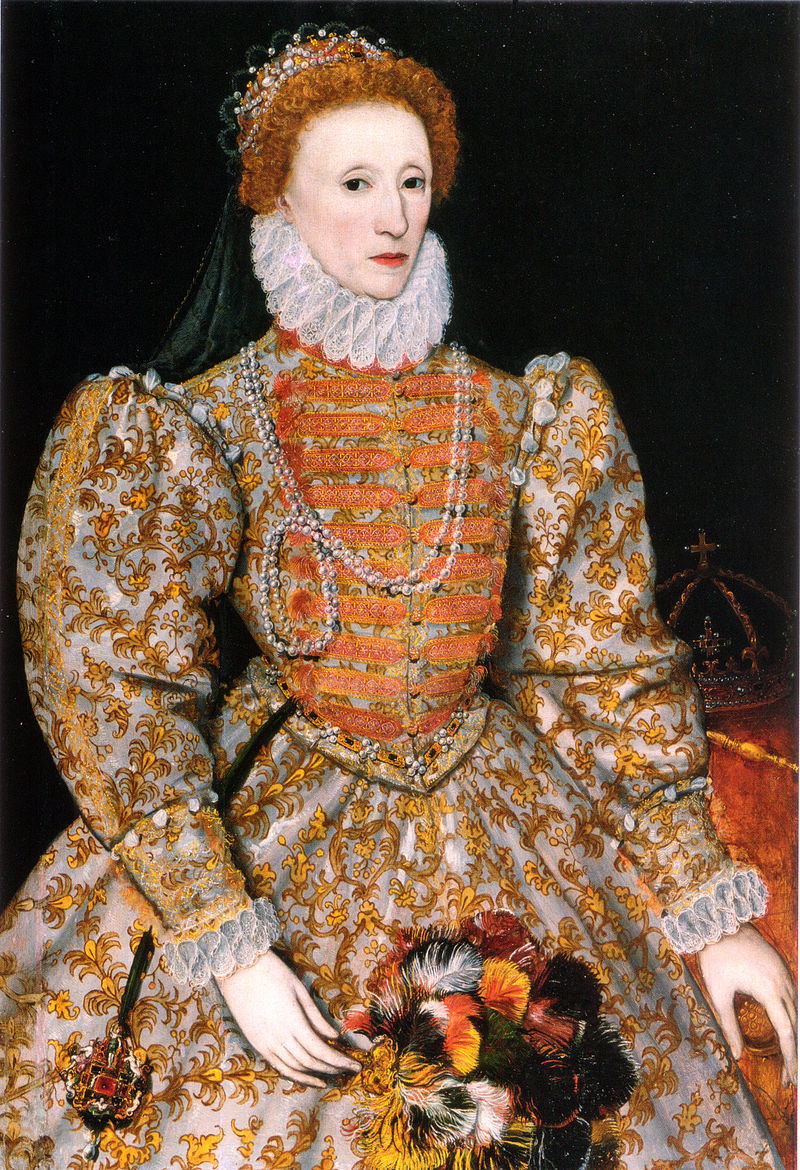
This week in 1558, Elizabeth Tudor was declared queen of England and Ireland, following the untimely death of her half-sister, Queen Mary. Elizabeth was the daughter of King Henry VIII by his second wife, Anne Boleyn. Her first and most important job as queen was to marry and produce an heir. Her sister Mary had married the King of Spain (leading to an unhappy long-distance marriage), and Elizabeth could have chosen a foreign royal too. Many of her advisors, on the other hand, preferred a noble English husband. Either way, conventional wisdom demanded marriage, since a kingdom without an heir is unstable, and since a mere woman can’t reign alone. Yet after Elizabeth had flirted with various foreign and English suitors for years, it became clear the queen would never marry. It’s not that Elizabeth disliked men. In fact, she apparently had a taste for big, athletic bad boys. Rather, the queen probably felt that, in a man’s world, a husband would steal some of her authority. And for an energetic, forceful, and smart ruler like Queen Elizabeth, that was unacceptable. So she reigned alone and became known and loved as the Virgin Queen (though her actual virginity seems doubtful). And she ruled well, blazing her own trail as a ruling queen without husband or heir. Her forty-five-year reign saw a steady rise in English might and witnessed the defeat of Europe’s greatest power – as Elizabeth’s navy (and bad weather) foiled a Spanish invasion and destroyed the Spanish Armada, in 1588. The Elizabethan era also saw a great flowering of English culture, including the rise of English drama and the start of Shakespeare’s career.
The queen’s refusal to marry, however, was not without consequences. She did not need a man to help her rule, but she did need an heir. Controversy about succession swirled around her later years. She ultimately let it be known that the king of Scotland would succeed her. King James was the son of Queen Elizabeth’s cousin and defeated rival, Mary Queen of Scots. So he descended from Henry VII, Elizabeth’s grandfather and the founder of the Tudor dynasty. Queen Elizabeth never did officially name James her heir, but when she finally died in 1603, King James took the throne, and the union of England, Ireland, and Scotland began.

0 Comments